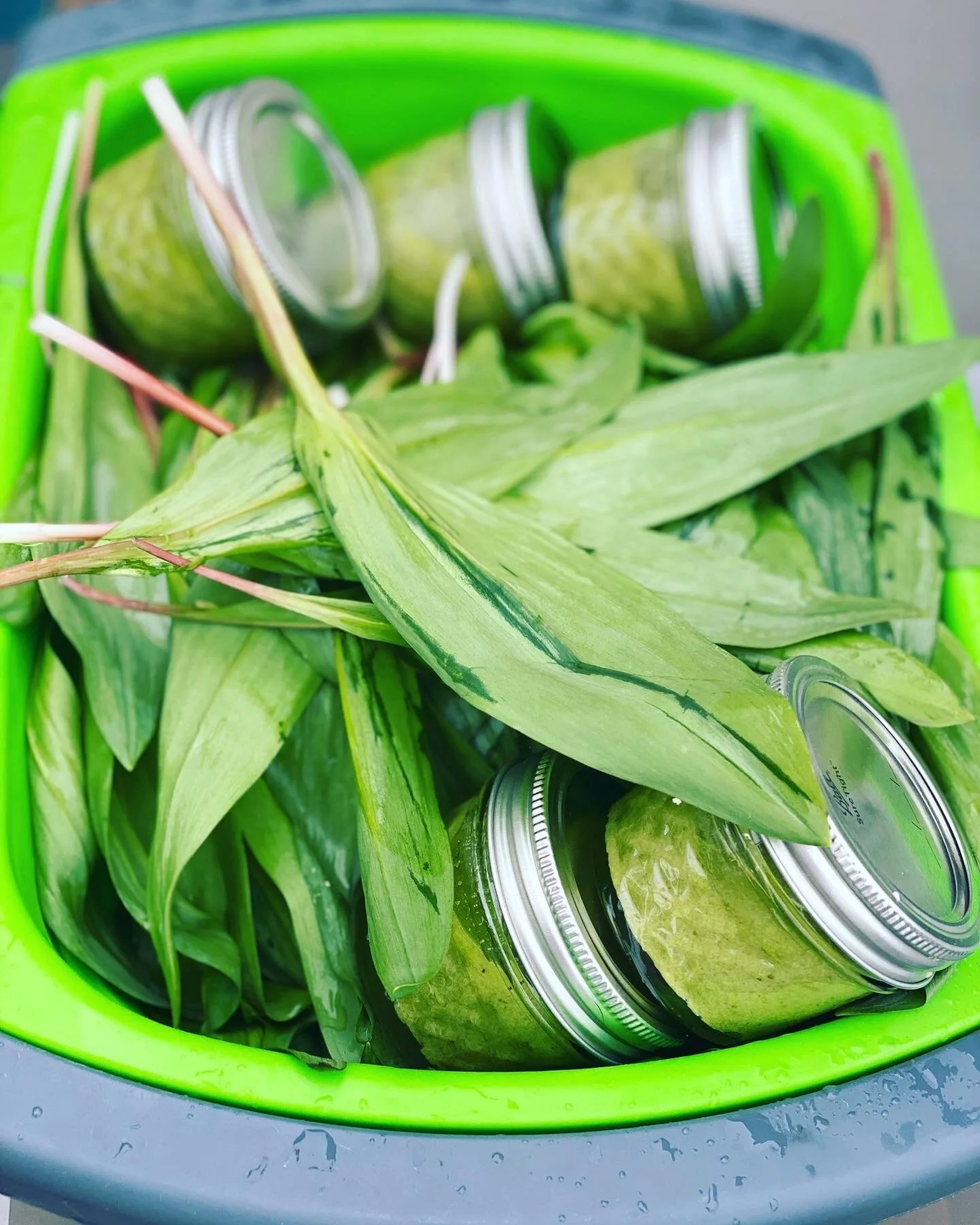Wild Ramp Pesto
This years the year we want to preserve as many of our favorites. The other day I foraged for wild ramps. During the spring when we’re out turkey hunting & all you can smell are onions, that’s when you know you’ve found them.
Ben will eat them when he’s walking around fresh out of the ground. I like the more “domestic” approach and find a few uses for them In our favorite dishes.
Tonight well have
rib eye steaks with a ramp and garlic compound butter.
sautéed ramp bulbs in Italian herbs
and last but not least,
fresh gnocchi or tortellini with my home made ramp pesto!
Now to make this you can use pine nuts, although I prefer it with pine nuts I can’t find any locally so I’ll be using walnuts this year instead.
Ramp Pesto
Any green onion, wild or cultivated, works with this recipe. I've done it with ramp leaves as well as the leaves from Sierra Nevada wild onions, chives, garden-variety scallions and whole three-cornered leeks. If you don't like pine nuts, pecans, walnuts and almonds are fine, too. If you've never toasted nuts before, put them in a steel pan over medium-high heat. Shake the pan frequently so you don't burn the nuts; pine nuts are especially persnickety this way. Pour the nuts out of the hot pan when they get a little brown on the edges.
Prep Time15 mins
Cook Time1 min
Total Time16 mins
Course: Condiment
Cuisine: Italian
Servings: 1 cup
Author: Hank Shaw
Ingredients
3 garlic cloves, roughly chopped
1/4 cup toasted pine nuts or chopped walnuts, pecans or almonds
3 tablespoons grated cheese, such as pecorino
2 cups ramp or other wild onion leaves, about 2 dozen
Salt to taste
About 1/2 cup extra-virgin olive oil
Instructions
f you are blanching your onions, bring a large pot of water to a boil. Add enough salt to make it taste like the sea. Set a large bowl of ice water nearby. Plunge the ramp leaves into the boiling water for 1 minute. Remove and quickly cool them down in the ice water. Squeeze dry with a tea cloth or paper towels.
Chop the ramp leaves and set aside. Pesto is best made with a mortar and pestle, thus the name, which means "pound." You can of course make this in a food processor, but it will not be the same. To start, add the toasted pine nuts and garlic and crush them.
Add the cheese and ramps and commence pounding. Mash everything together, stirring with the pestle and mashing well so it is all fairly uniform.
Start adding olive oil. How much? Depends on how you are using your pesto. If you are making a spread, maybe 1/4 cup. If a pasta sauce, double that. Either way, you add 1 tablespoon at a time, pounding and stirring to incorporate it. When it's a nice rough paste, taste it and add salt if you need to; sometimes the cheese makes the pesto salty enough by itself. Serve as a spread on bread, as an additive to a minestrone, as a pasta sauce or as a dollop on fish or poultry.
Notes
If you are using a food processor, add everything but the oil and pulse to combine. Then, turn the motor on the processor and drizzle in the olive oil. Be careful not to let the mixture become a smooth paste!


